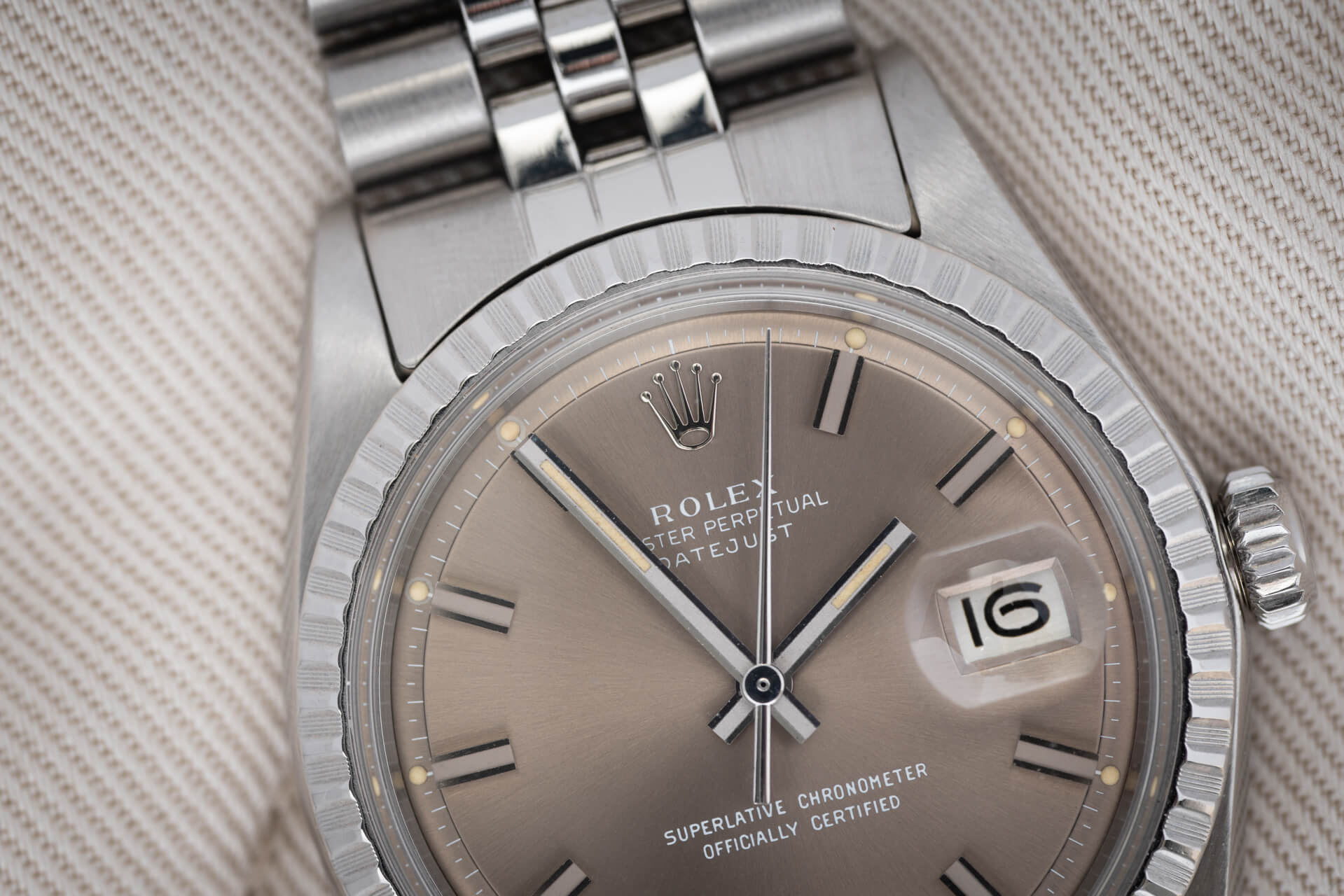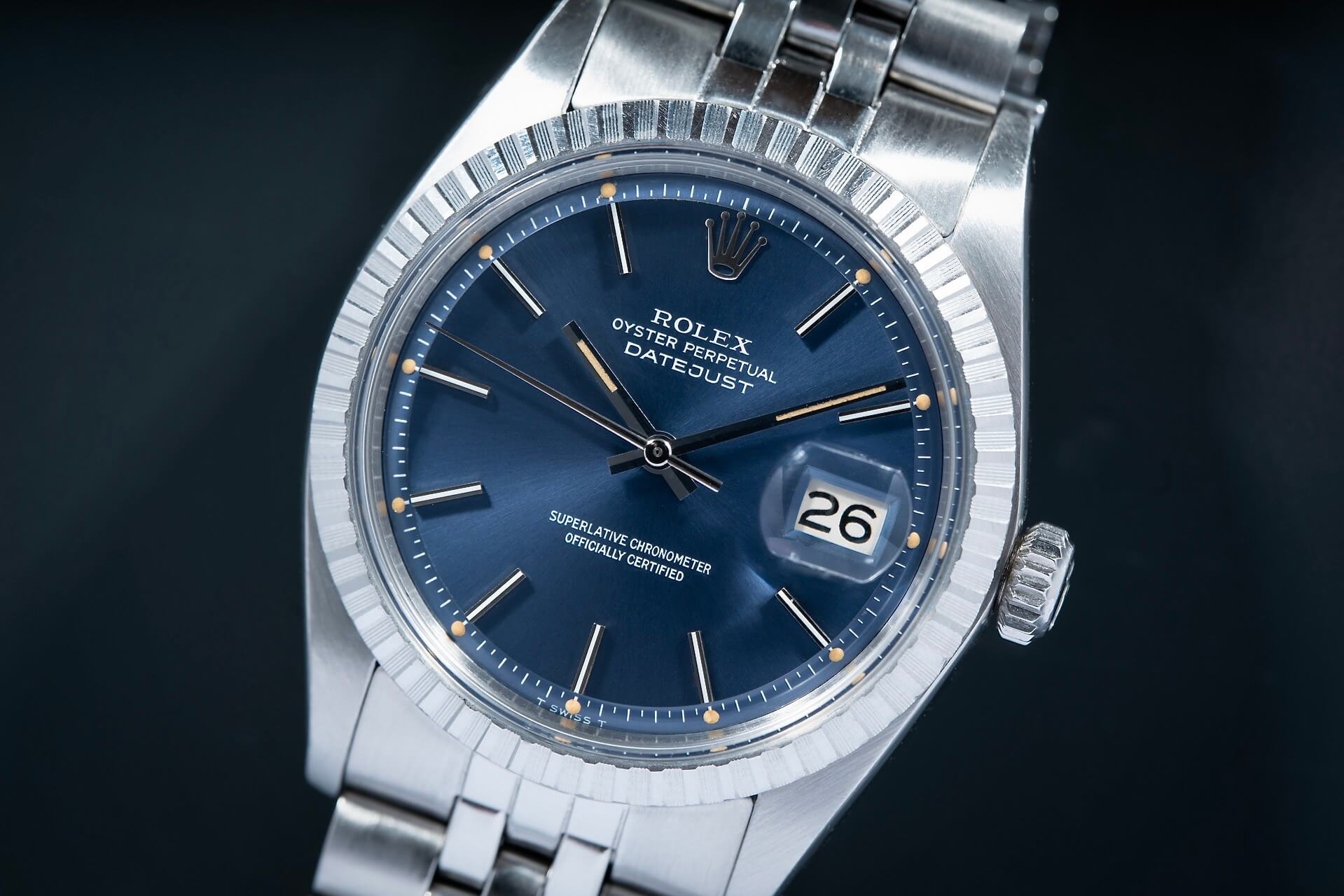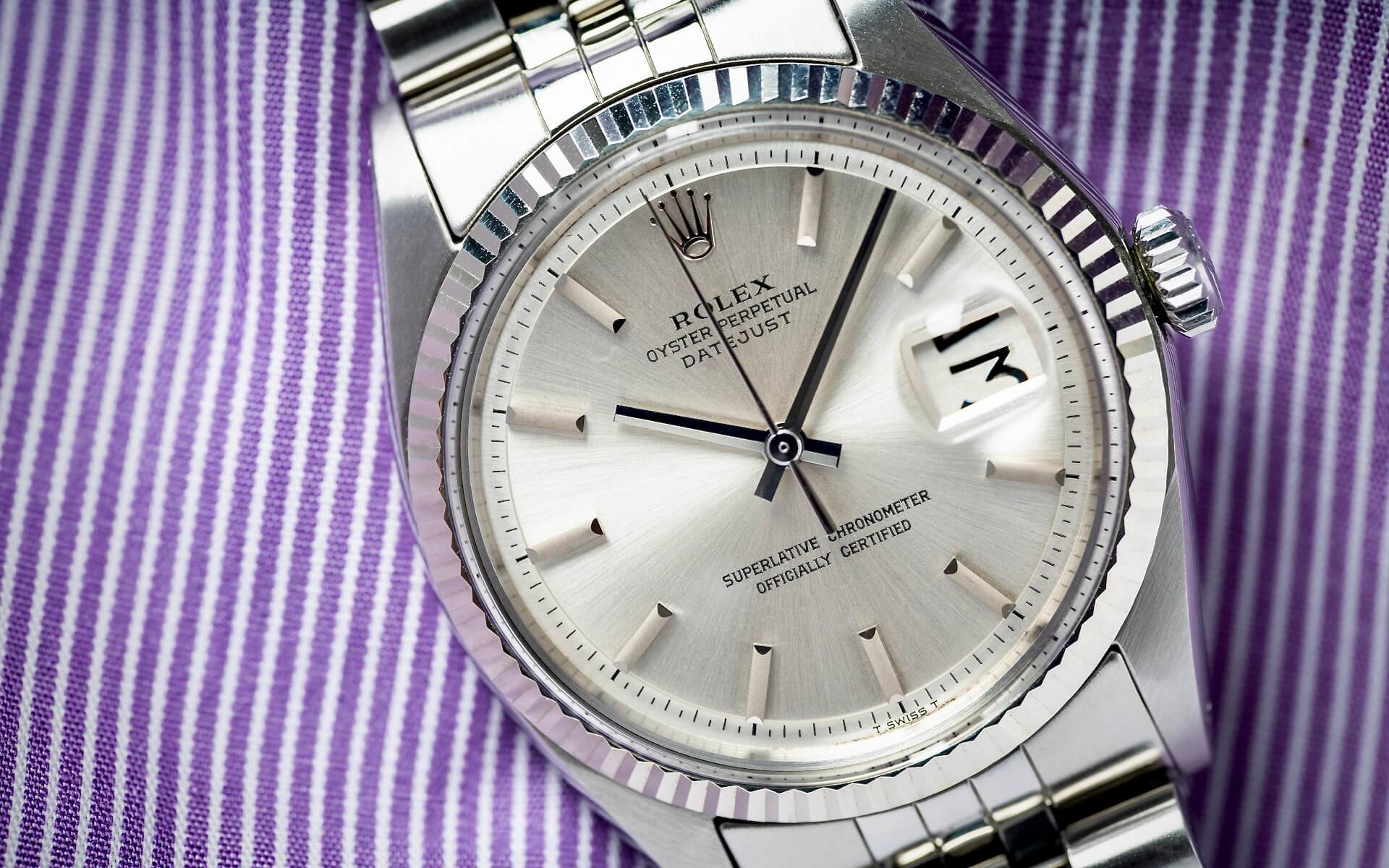Pie Pan Dials: A Yummy Horological Delight

Dials are often referred to as the face of a watch. This is quite true, as a lot of the expression of the timepiece comes from this little disk. Usually, in particular with Rolex, they are flat, but there is an exception to the rule, the so-called ‘Pie pan’ dials. These became in fashion during the late 1950s. One of the best-known examples is the Omega Constellation of that era. This watch used a particular distinct pie pan shape, meaning that the edges of the dial curved down towards the movement. This is also how this type of dial got its nickname, as it looks like you are looking at the bottom of a pie pan.

Rolex Datejust Ref.1603 from 1973
Rolex also utilized the pie pan dials but never made them as extreme looking as Omega did. It was a more subtle affair for Rolex, folding down the dial just past the markers, where they printed the marks to indicate the minutes/seconds. Rolex utilized these dials in both the Datejust and Day-Date, of which the prime examples are Ref.1603 and Ref.1803.

Light plays beautifully with the pie pan dial of this Rolex Datejust Ref.1601
While rather subtle, the effect is quite astonishing. The pie pan shape gives the dial much more depth. This is also what makes these generations of Datejust and Day-Date so appealing. It adds a vintage touch that gives these watches an appearance that sets them firmly apart from their siblings. Another aspect is the play of light on the dial. As it is not a flat surface, rays of light don’t hit it at just a single angle but multiple. The result is that the dial comes more to life and that you can also notice different hues in its color. This effect is further enhanced by the acrylic glass mounted on top to protect the dial. As this material gives the light that goes through a softer tone, it interacts beautifully with the slope part of the pie pan dial, turning these watches into a yummy horological delight.